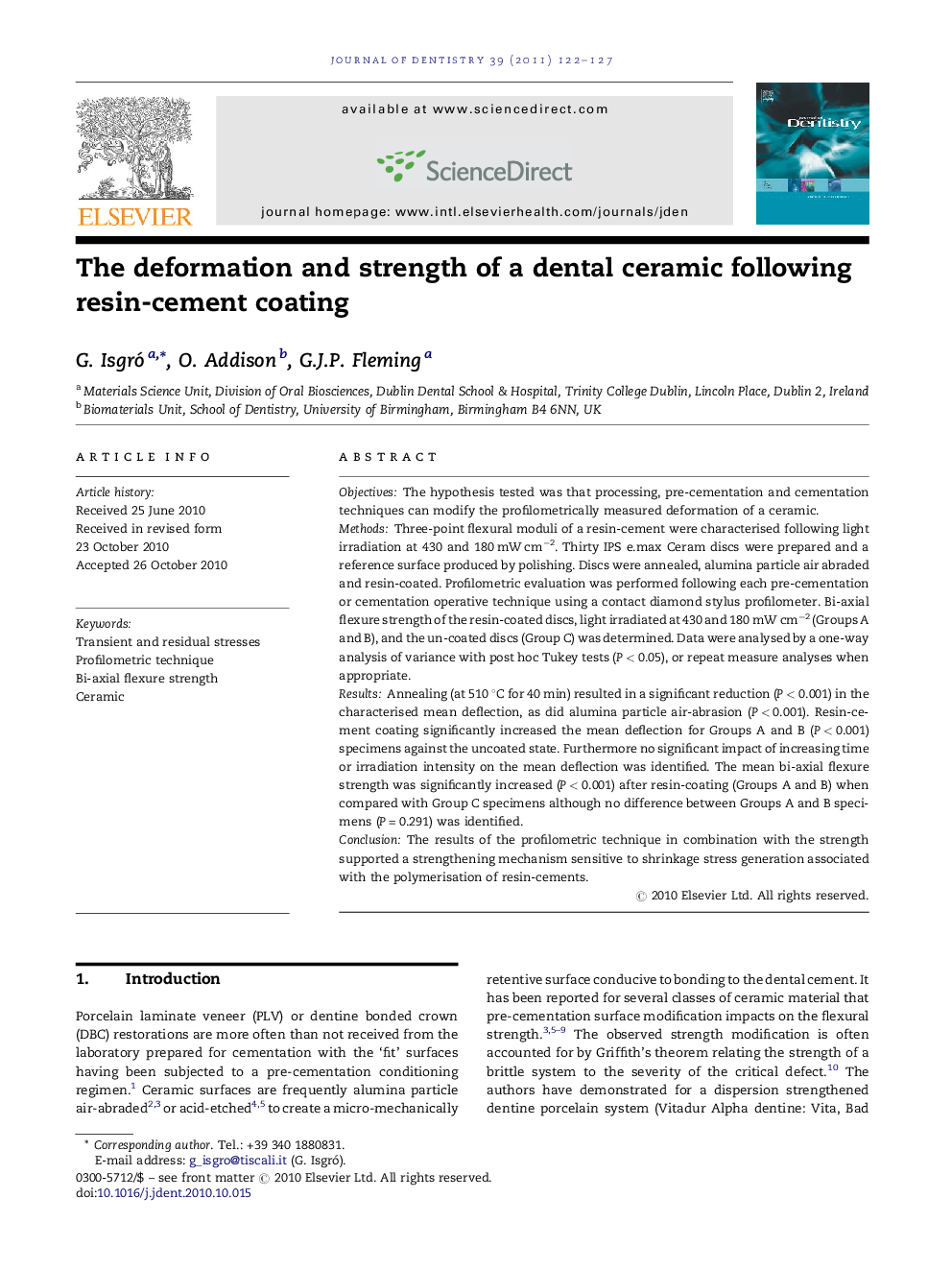| Article ID | Journal | Published Year | Pages | File Type |
|---|---|---|---|---|
| 3146313 | Journal of Dentistry | 2011 | 6 Pages |
ObjectivesThe hypothesis tested was that processing, pre-cementation and cementation techniques can modify the profilometrically measured deformation of a ceramic.MethodsThree-point flexural moduli of a resin-cement were characterised following light irradiation at 430 and 180 mW cm−2. Thirty IPS e.max Ceram discs were prepared and a reference surface produced by polishing. Discs were annealed, alumina particle air abraded and resin-coated. Profilometric evaluation was performed following each pre-cementation or cementation operative technique using a contact diamond stylus profilometer. Bi-axial flexure strength of the resin-coated discs, light irradiated at 430 and 180 mW cm−2 (Groups A and B), and the un-coated discs (Group C) was determined. Data were analysed by a one-way analysis of variance with post hoc Tukey tests (P < 0.05), or repeat measure analyses when appropriate.ResultsAnnealing (at 510 °C for 40 min) resulted in a significant reduction (P < 0.001) in the characterised mean deflection, as did alumina particle air-abrasion (P < 0.001). Resin-cement coating significantly increased the mean deflection for Groups A and B (P < 0.001) specimens against the uncoated state. Furthermore no significant impact of increasing time or irradiation intensity on the mean deflection was identified. The mean bi-axial flexure strength was significantly increased (P < 0.001) after resin-coating (Groups A and B) when compared with Group C specimens although no difference between Groups A and B specimens (P = 0.291) was identified.ConclusionThe results of the profilometric technique in combination with the strength supported a strengthening mechanism sensitive to shrinkage stress generation associated with the polymerisation of resin-cements.
